Celebrate summer with this delightful Japanese dessert called Anmitsu! It’s a Japanese wagashi dessert with kanten jelly, fruits, mochi, sweet red bean paste, green tea ice cream and a good drizzle of black sugar syrup.
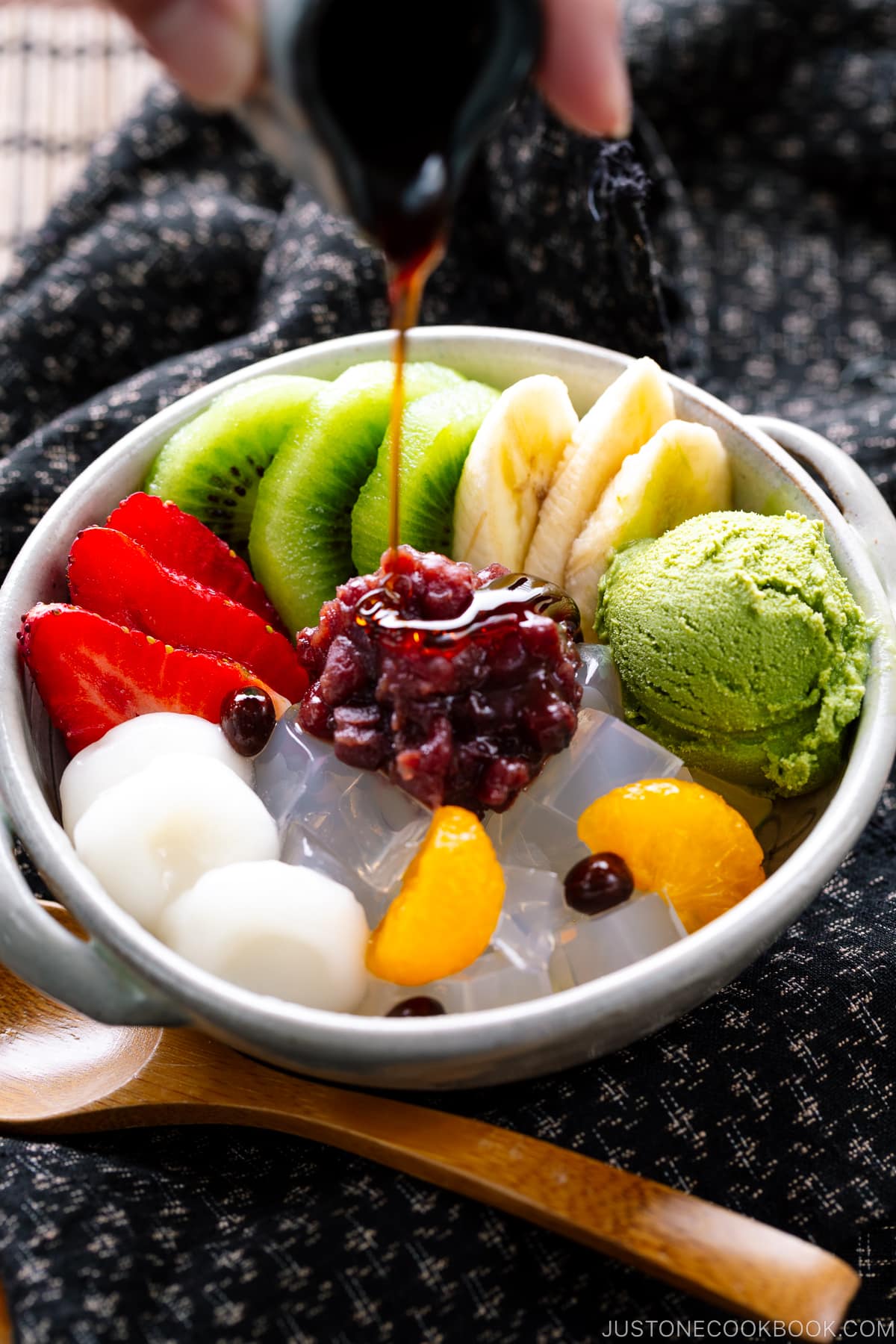
Looking for a new Japanese summer dessert to try? Try this traditional dessert called Anmitsu (あんみつ). It’s made with kanten jelly topped with various toppings. You can make the jelly ahead of time and the rest of dessert is just to assemble. It’s a perfect chilled dessert that does not require baking!
Table of Contents
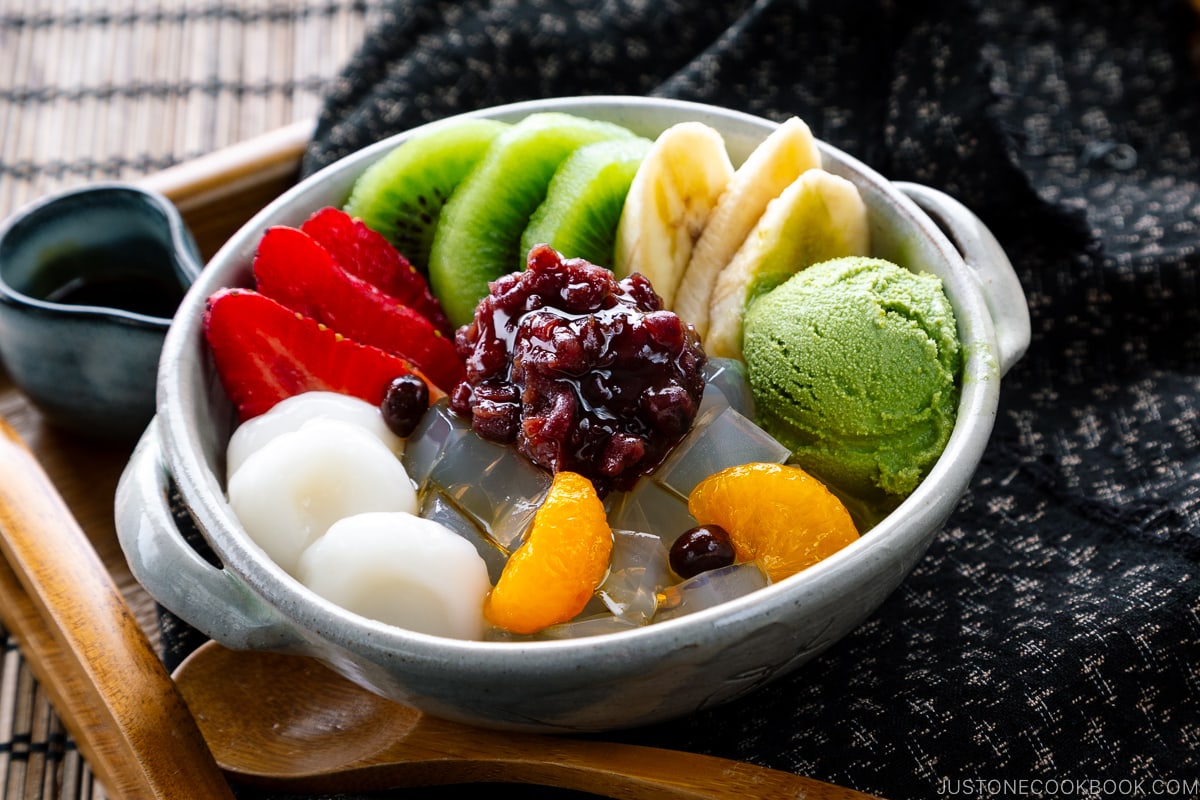
What is Anmitsu?
Anmitsu (あんみつ) is a traditional Japanese cold dessert made of white, semi-translucent jelly. This jelly is called agar or kanten (寒天) that is made from red algae; therefore, it’s vegan-friendly.
What is Kanten?
The red alge (seaweed)—the main ingredient for kanten jelly—doesn’t have a salty flavor unlike other types of seaweed. So kanten or agar jelly is flavorless, and you don’t have to worry about the taste of the dessert.
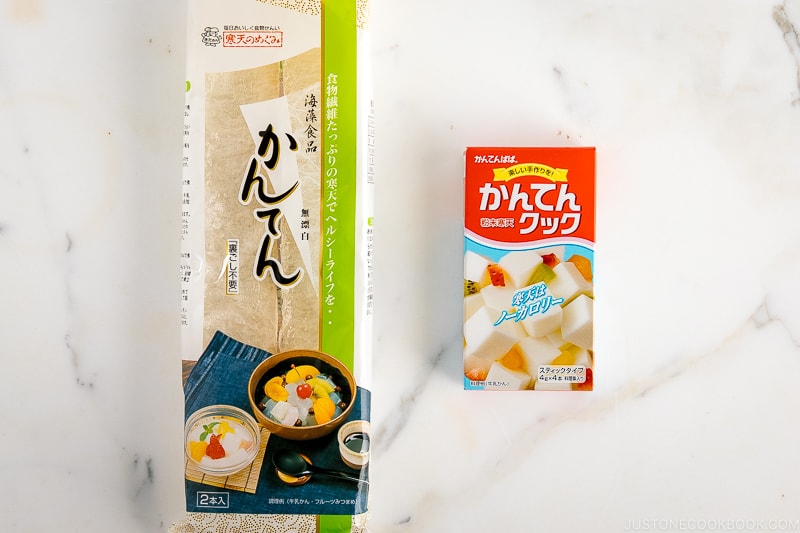
Kanten is high in dietary fiber and it’s a great alternative to traditional gelatin for those who are vegan/vegetarian.
All you need to do is to dissolve the kanten (stick or powder) in hot water and let it firm at room temperature. Unlike gelatine, kanten can retain its firm shape at room temperature.
Because kanten is flavorless, you would enjoy the texture of the jelly, along with other ingredients in the dessert. Don’t forget to choose fun and exciting toppings to serve with kanten!
If you want to know a little bit more about kanten, please read here.
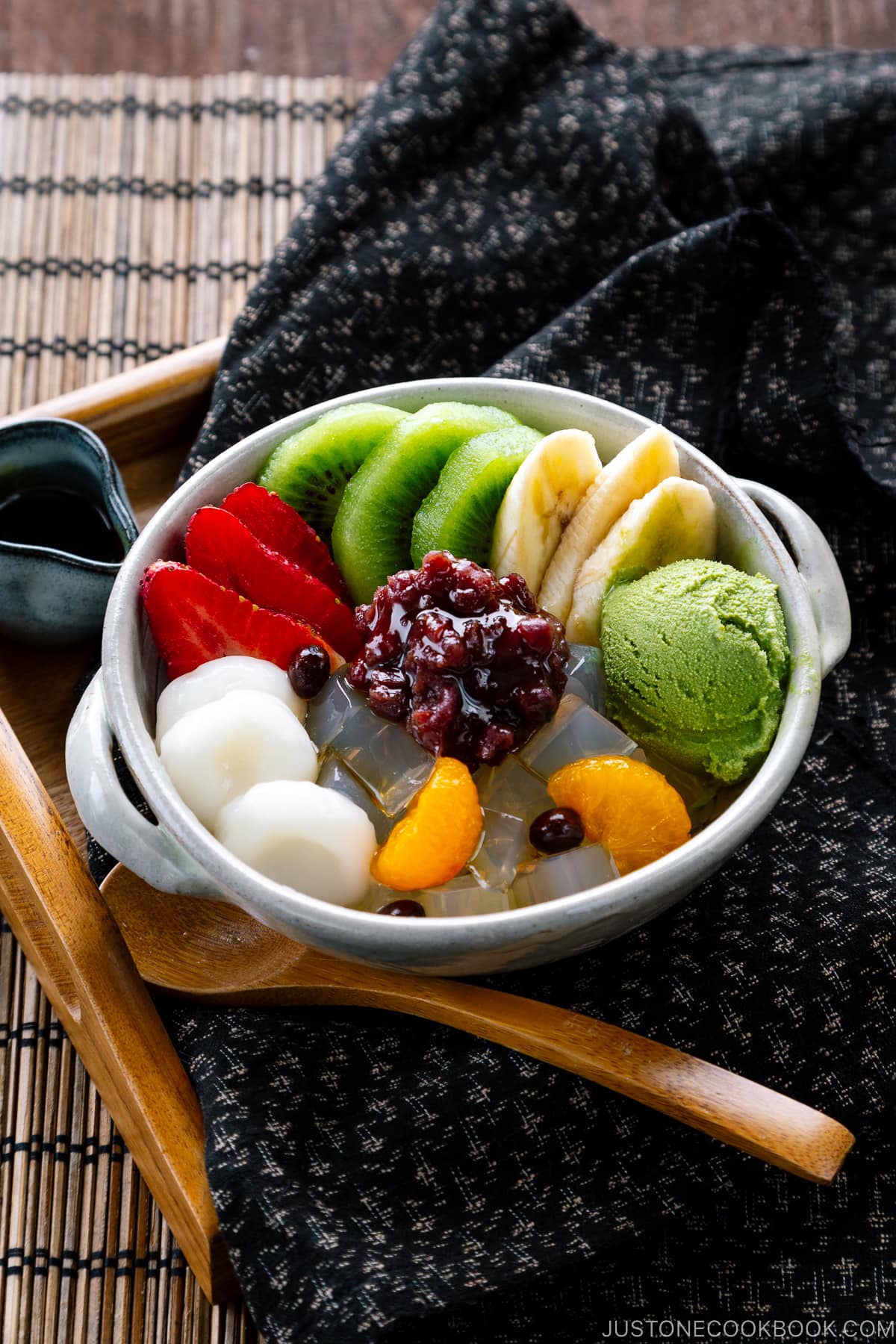
How to Make Anmitsu
To make anmitsu, you would first need to make kanten jelly (agar jelly).
The kanten jelly is typically served in a bowl with the following delicious add-ons. You can serve all of the toppings as I did, or pick the one you like.
Anmitsu Toppings
- Sweet red bean paste – The majority of wagashi (Japanese confectionery) includes sweet red bean paste called anko. It’s the an part of anmitsu.
- Mochi – This type of mochi is called gyuhi, which is made of glutinous rice flour. These Japanese sweet dumplings are chewy and soft at the same time. If you’re going to add this, follow my Shiratama Dango recipe.
- Green tea ice cream – You can use vanilla ice cream instead, but I wouldn’t recommend other flavors of ice cream to avoid conflict in flavors.
- A variety of fruits – Bananas, kiwis, strawberries, peaches, pineapples, canned mandarin orange, etc.
- Red endo-mame peas – Anmitsu is topped with these boiled and chilled peas. These specific peas could be hard to find. I took a shortcut and used these peas from a canned Fruits Mitsumame.
How to Serve Anmitsu
Small cubes of kanten jelly are served in a bowl and toppings are placed on top or on the side. Since the kanten is white translucent jelly, consider colorful toppings for an appealing look.
Serve anmitsu with black sugar syrup (黒蜜; the mitsu part of anmitsu), made of Okinawan black sugar, and drizzle the syrup over the jelly before eating.
Enjoy putting mouthfuls of these delicious items from the bowl… Despite all the differences in texture and flavors, this dessert represents quintessentially Japanese harmony, where everything works together.
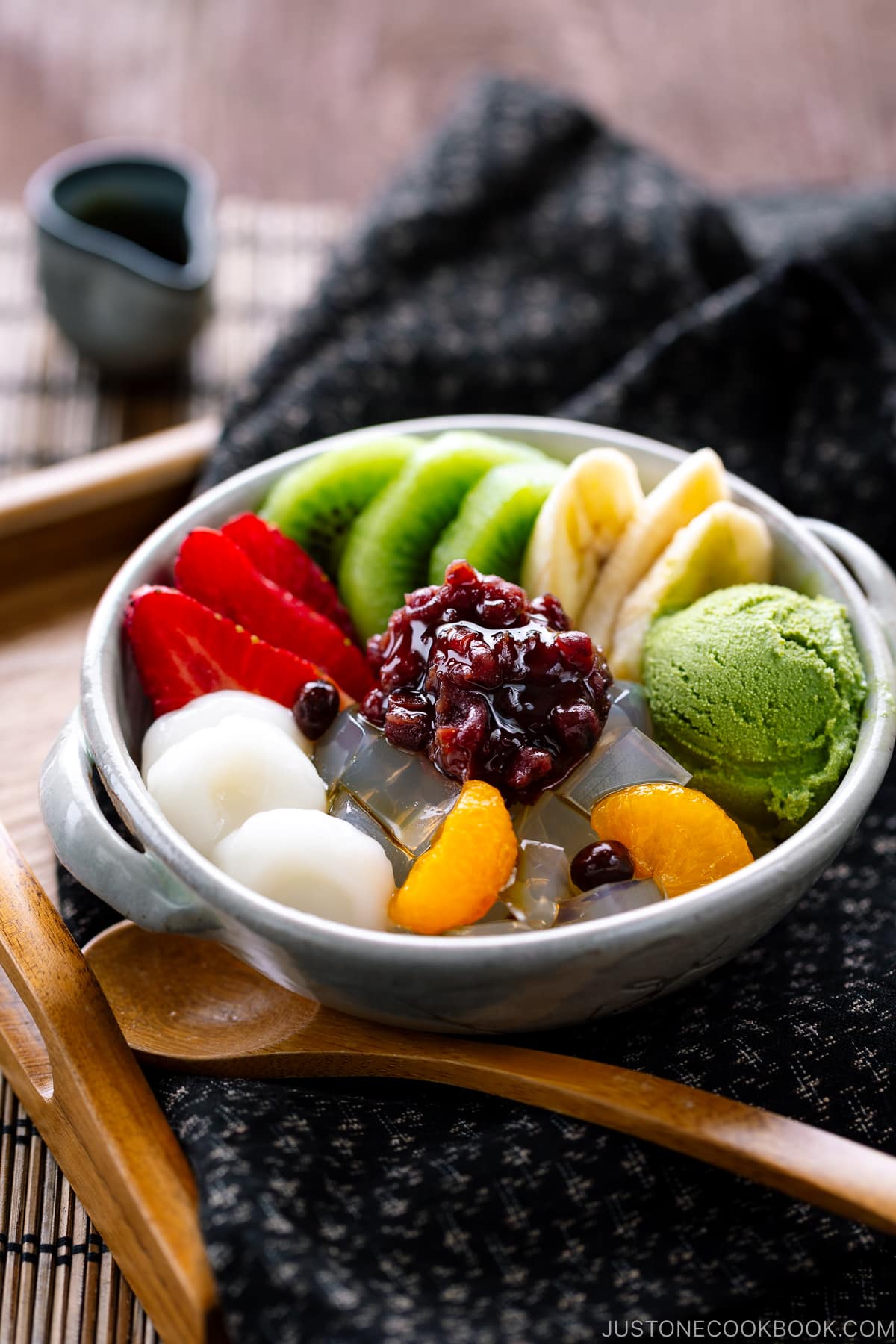
Anmitsu Trivia
A little fun trivia for those who want to know a little bit more about the dessert. The recipe for anmitsu has actually evolved through different periods of time and you can find many variations.
It started as mitsumame (みつ豆).
Mitsumame is made of kanten jelly + black sugar syrup (mitsu) + red endomame peas (name).
With different toppings, the dish name changes:
- Fruits Mitsumame — mitsumame + fruits
- Shiratama Mitsumame — mitsumame + shiratama dango
- Cream Mitsumame — mitsumame + ice ceam
- Anmitsu — mitsumame + sweet red bean paste (anko)
- Cream Anmitsu — mitsumame + ice cream + anko
- Shiratama Cream Anmitsu — mitsumame + shiratama + ice cream + anko
- Fruits Shiratama Cream Anmitsu — mitsumame + fruits + shiratama + ice cream + anko
Do you know which one is today’s recipe? It’s the last one, Fruits Shiratama Cream Anmitsu! I hope you enjoy this colorful treat!
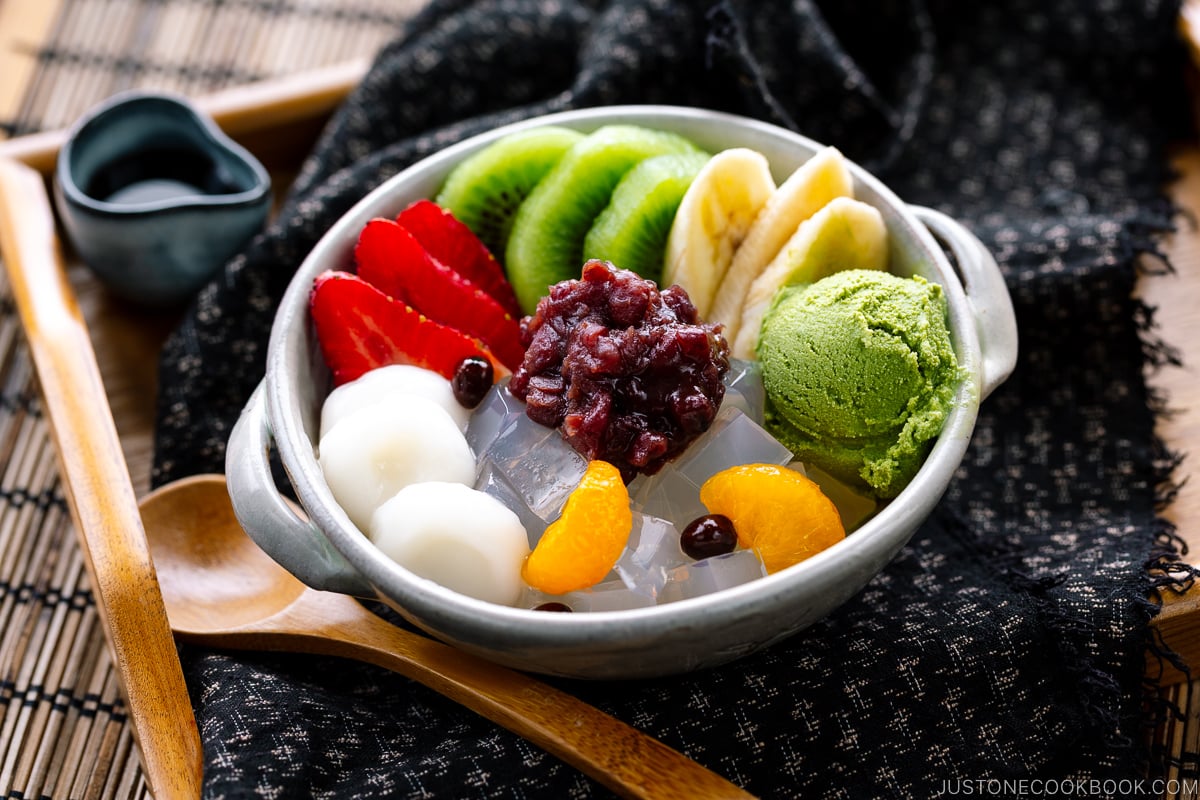
Wish to learn more about Japanese cooking? Sign up for our free newsletter to receive cooking tips & recipe updates! And stay in touch with me on Facebook, Pinterest, YouTube, and Instagram.
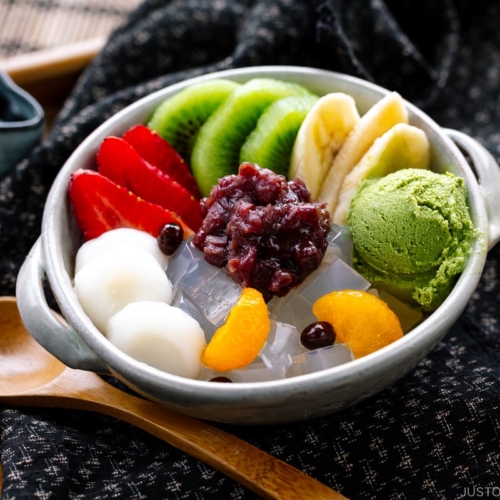
Anmitsu (Japanese Kanten Jelly Dessert)
Video
Ingredients
- 1 batch kanten jelly (see how to make kanten jelly)
- 1 batch Homemade Shiratama Dango (Mochi Balls) (use my recipe to make it at home)
- 6 Tbsp sweet red bean paste (anko) (you can make it homemade on the stovetop or in a pressure cooker)
- 6 scoops green tea ice cream (or vanilla ice cream; try my Matcha Ice Cream recipe)
- strawberries
- banana
- kiwis
- kuromitsu (black sugar syrup) (see how to make homemade kuromitsu)
- boiled red endomame peas (optional)
Instructions
- Gather all the ingredients. Please note that we can prepare everything but Shiratama Dango ahead of time. You can purchase sweet red bean paste, green tea ice cream, and kuromitsu at a Japanese grocery store, or find the recipe link in the ingredient section above to make it homemade.
- Make 1 batch kanten jelly; see my recipe for homemade kanten jelly.

- Make 1 batch Homemade Shiratama Dango (Mochi Balls) just prior to assembling this dessert. See my recipe for how to make shiratama dango.

- Cut the strawberries, banana, and kiwis into bite-sized pieces. Into the individual serving bowls, evenly divide the kanten jelly, fruit pieces, the shiratama dango, 6 Tbsp sweet red bean paste (anko), and 6 scoops green tea ice cream. Top with optional boiled red endomame peas and serve with kuromitsu (black sugar syrup) on the side.
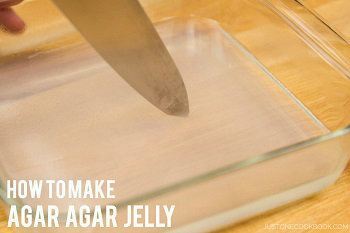
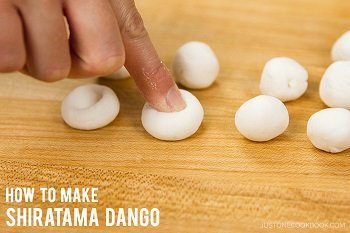
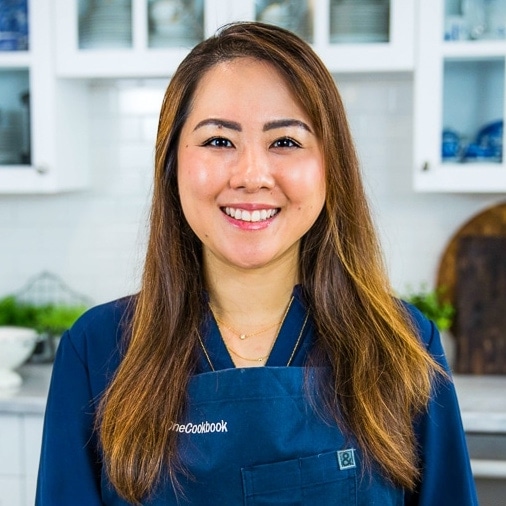
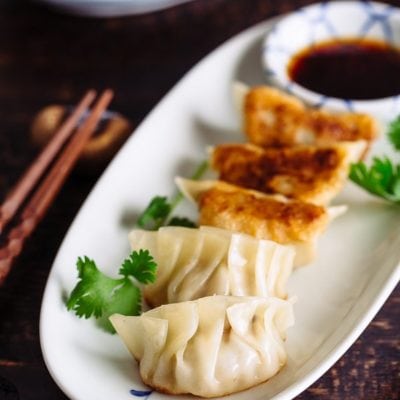
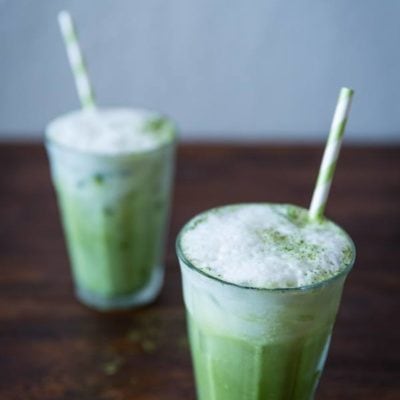
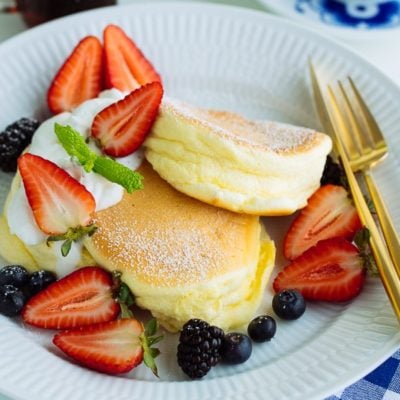
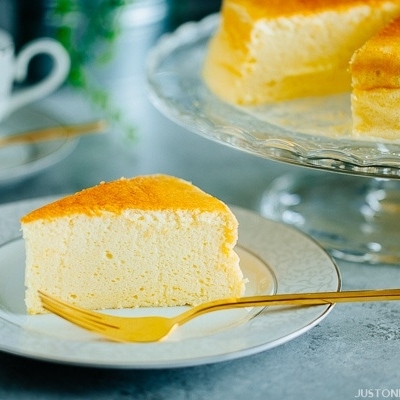
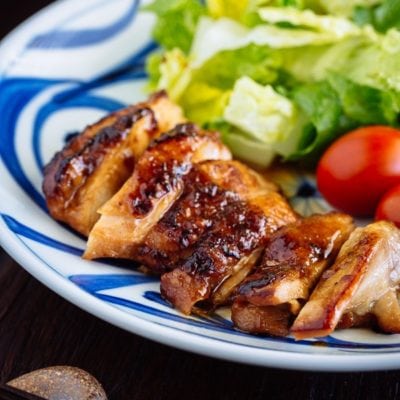
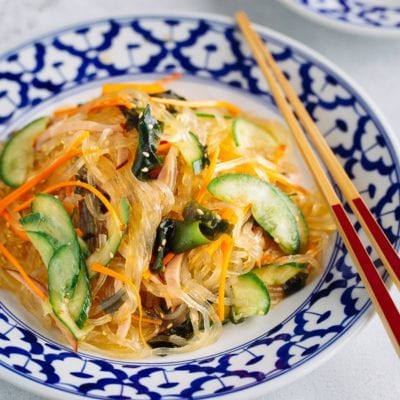
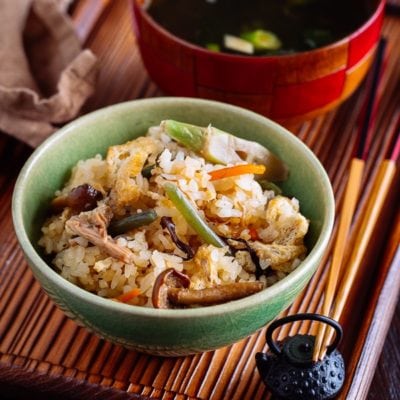
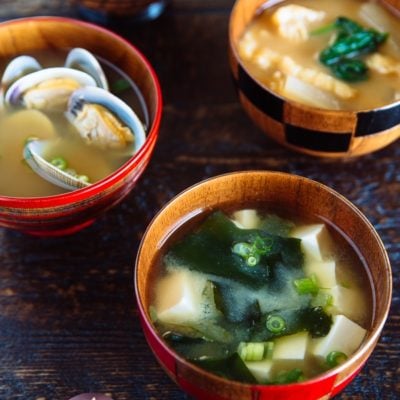

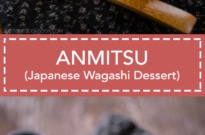
[…] Dango (白玉団子) is often served with Zenzai (Oshiruko), Kakigori (shaved ice), and Anmitsu. They are soft and small, and the flatter shape is perfect as a topping for Japanese […]
[…] is used to make mochi for Anmitsu, Ichigo Daifuku, Dango, and Zenzai […]
[…] Anmitsu […]
[…] For homemade Anmitsu (Mitsumame) recipe, click here. […]
If you have a Trader Joes close by, they usually stock green tea ice-cream.
Hi Reggie! Yep, we’re lucky to live lots of stores that sell green tea ice cream. However, I hope you give my green tea ice cream a try… it’s very good!
Hi Nami, I looked up your green tea recipe. TWO cups of milk? Wow around here that is just a sample batch to try something new! I’ll have to quadruple it. Also we normally use goat’s milk to make ice cream because it makes it SO creamy and delicious. I might have to leave the farm and actually BUY some cow milk if this is supposed to be on the less creamy side of things.
Hi Reggie! Wow, goat milk! Where are you from? I think some supermarket carry goat milk, but it’s not easy to find here in the US (or even in Japan).
Nami go out and look North! See me waving? Okay I’m not quite that close. I work on a farm and goat dairy in the Sacramento area. Yes some grocery stores have goat’s milk, and, I think, it is usually overpriced. It is SO MUCH better when you “grow your own”. Like knowing the history of the food from your own garden; knowing what the milk animal has been eating (and more importantly what they have NOT been eating) makes me much more comfortable about the quality of my food. I have to admit, we do add some evaporated cow milk (organic of course) to increase the cream level. We raise the LaMancha breed which are lower in butterfat than many goat breads. In fact the butterfat content is about the same 4% as the average of grocery store cow’s milk.
Ohhh I see you (waving)!!! I understand what you mean. You’re lucky to know the source really well and get the best quality of milk up there! Thanks for sharing, it’s very fascinating to hear about how you make goat’s milk. 🙂
[…] Den blå skål er lavet med matcha gele, almindelig anko, dango, jordbær i skiver, blomme i skiver, kirsebær, vanilleis og så er der hældt sirup over. Man kan finde en slags grundopskrift her: https://www.justonecookbook.com/anmitsu/ […]
[…] find shiratama dango in wagashi (和菓子, Japanese confectionery) such as Anmitsu or Zenzai […]
[…] types of red bean pastes are used in many delicious Japanese sweets such as Anmitsu, Daifuku, Dango, Dorayaki, Oshiruko / Zenzai, Taiyaki, Manju, and […]
[…] cafe/waitress uniforms. Cream Anmitsu is a summer dessert from Japan. Nami of Just One Cookbook has an excellent explanation of Cream Anmitsu and its history here, as well as recipes for all of the major […]
[…] cafe/waitress uniforms. Cream Anmitsu is a summer dessert from Japan. Nami of Just One Cookbook has an excellent explanation of Cream Anmitsu and its history here, as well as recipes for all of the major […]
[…] is used in many Japanese sweets (wagashi) such as Anmitsu, kuzumochi, pancakes, […]
[…] how to make simple agar/kanten jelly, which used in my Anmitsu recipe. This agar/kanten jelly is not as sweet because Anmitsu is served with […]
Nami, there is a site (https://www.lemoda.net/japan/food/entry/endo-mame) that says that endomame is: Pisum sativum L. (the scientific name for the plant). When looking this up, it seems they are a variety of garden pea with a different color (http://plants.bauercreative.sk/pisum-sativum.php). Pisum sativum (without the L. at the end) is the name for peas, in general: https://en.wikipedia.org/wiki/Pea Someone may not be able to find the purple/red variety in certain areas, but if not, it seems as if typical garden peas are very close. A fresh, sweet, plump variety (the sort you might find at a farmer’s market) would likely be a good replacement. 🙂
Thank you so much for sharing the information, Oleander!
Aloha Nami,
Watching your an mitsu video always put me in a good mood (I watched it a lot!) and I’m happy to say that I finally made your recipe for my husband’s birthday????. It was enjoyed by my whole family! I was worried about the dango, but it came out well, even with the mochiko flour. I didn’t have the black sugar syrup so I improvised by making a brown sugar syrup. Thank you for sharing a delicious recipe and fun, happy video!
Mahalo, Amy
Aloha Amy! Aw thanks for watching my Anmitsu video. You know this recipe is not so well-known, so I was wondering who would watch and make it. YOU! You’ve just made me so happy! Thank you!!! I’m glad your family enjoyed it!
Thank you Nami! I am so, so thankful that you share your recipes. Thank you for being so generous with your gift of cooking. Have a great Labor Day weekend!